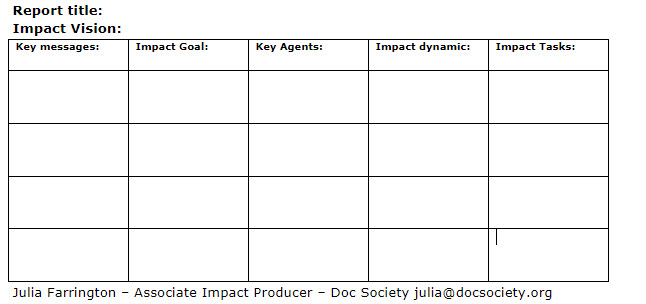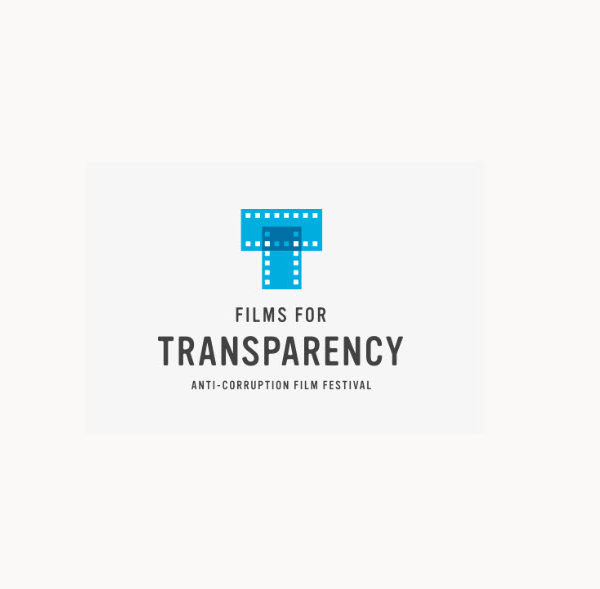This tipsheet is part of the J4T/F4T pilot project – a collaboration between investigative journalists, documentary film-makers and impact producers.
It offers investigative journalists a way of looking at planning for impact based on The Impact Field Guide developed by Doc Society for documentary film-makers. Check it out – it’s an invaluable resource – practical and insightful, illustrated with inspiring case studies, with lots of links to extra reading.
In consultation with J4T journalists, we asked if this planning for impact guidance was helpful to journalists. Some embraced the need to create impact with their work. Others felt that the job of the investigative journalist was to uncover the facts, and that it was someone else’s job to think about impact. There isn’t a one size fits all and this tipsheet’s relevance and usefulness may depend on whether you are a staff journalist, or a freelancer. It’s a work in progress and we hope these exercises will stimulate ideas, discussion and debate. Let us know what you think. This impact tracker is a tip sheet with potential to evolve over time.
The following are offered as exercises you can do to prepare the ground for writing an impact strategy for your project. A suggested template for plotting out your strategy is at the end of the tip sheet.
- Vision and Strategy –you need both to make impact
- Vision:Have a clear vision for what you want your report to achieve; clarity of vision will help guide how you think about the impact you can have.
- Strategy:Give time to planning the strategy needed to achieve that vision – who needs to know about your project, who can help make the desired change happen. This will help define where your work could be published, or shared. NB: not every story needs to maximise readership to achieve impact, but getting it to the right readership is what counts.
- Define your vision –a vision has two elements
- Journalistic vision: write a short statement about your journalistic vision for the story/report you are writing. How are you telling the story? What’s your style, approach, medium? How do the choices you make about story telling/report writing, affect the impact vision and vice versa?
- Impact vision:write a short statement saying simply what is the big picture change you want to see, what motivates you to do this piece of work.
- Develop your strategy –to help you do this, ask yourself some questions
- Who can engage most effectively with your story?
- What is a particular audience likely to already think about the issue?
- Whatdoes the issue landscape look like (current events, public discourse, policy debates, etc.)?
- What do campaigners working in this issue landscape need?
- What are the possible “pressurepoints” that the story can trigger?
- What would the target audiences need to do in order for real change to happen?
- Map the issue –what do you know about the change makers?
- Your research for this story/research will have already given you a clear idea of who the key actors and agents in the issue are, and who is doing work on the agenda you are addressing; knowing about their strategic priorities could help you refine your impact strategy.
- Consider collaborating with documentary film-makers or other change makers – an investigative journalist can bring invaluable new insight, information and capacity to impact campaigns
- The Four Impact Dynamics – which impact dynamic drives your report? Is there more than one? Being clear about your impact dynamic/s will help you define your impact goals.
Doc Society has identified these four dynamics based on extensive analysis of documentary film and through working with other change agents. A story or report could have more than one impact dynamic, but rarely all four.
Changing minds: Mass awareness and understanding – creating a shift in public attitudes. What attitudes and beliefs are you trying to create or change?
Changing behaviours: Actively mobilising people to do different not just think different, whether that’s to buy or boycott, donate or volunteer. What specific actions could you promote?
Building communities: Grassroots organising – providing the focal point around which people come together. What communities could you serve or support?
Changing structures: Whether in politics or business, directly influencing law and policy to change the context. What laws or policies embed the problem you are trying to solve?
- Draft your strategic plan
Use this planning template below to work out your strategy in detail. This is a living document and can be changed as your story develops.
- Put your impact vision (from section 2 above) at the top of table.
- Column One MESSAGES:What are the specific problems you identify in your story/report? Start with the headline problem that drives your impact vision.
- Column Two – GOALS:what would the concrete solution/reversal of each problem be that your project could aim for?
- Column Three –KEY AGENTS: Who could make this change happen? What
audiences can you speak to through your project?
- Column Four – DYNAMIC: which of the four impact dynamics applies?
- Column Five –TASKS: how can you connect your work to the agent? What needs to happen for the agent to deliver?



